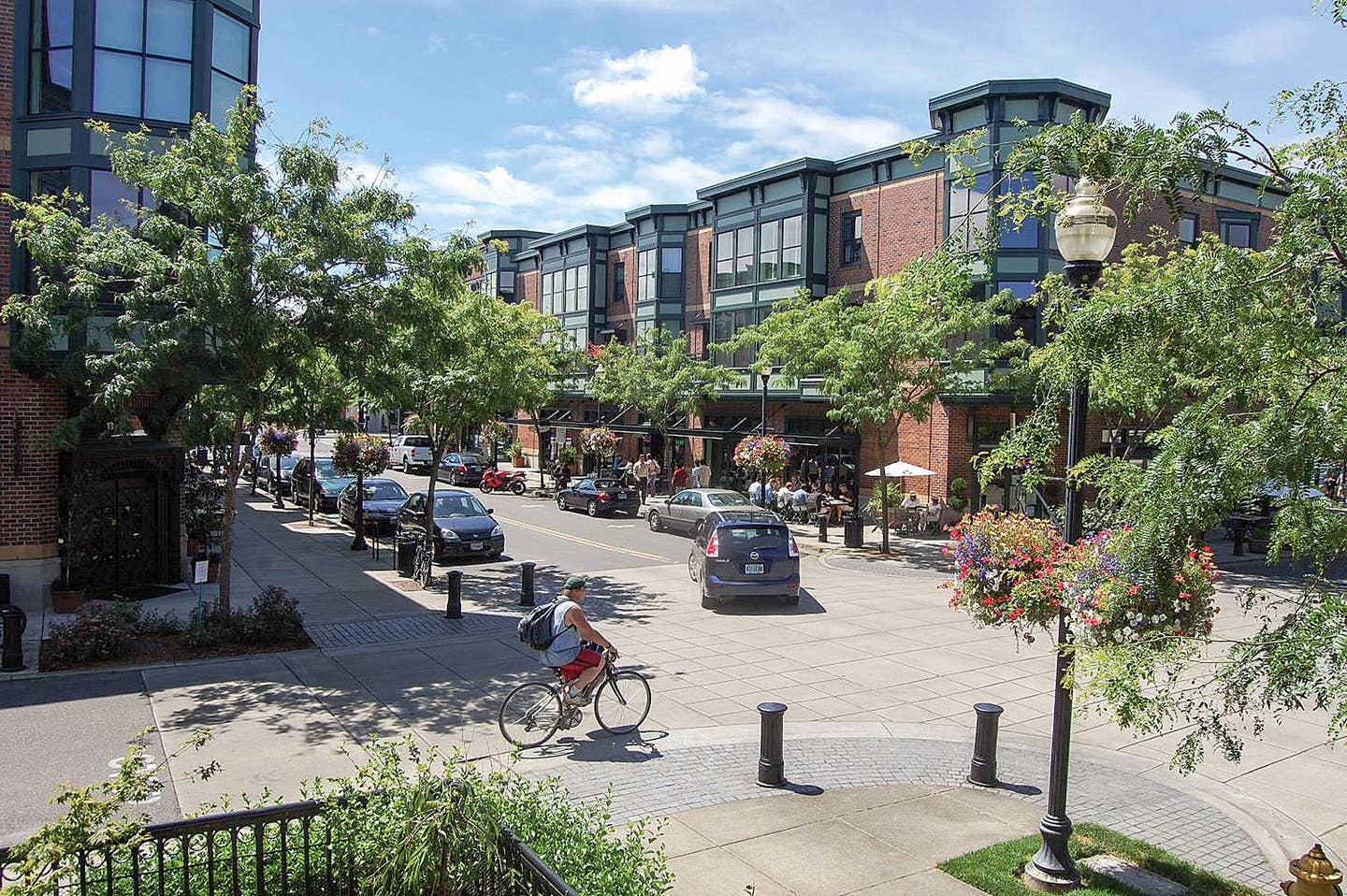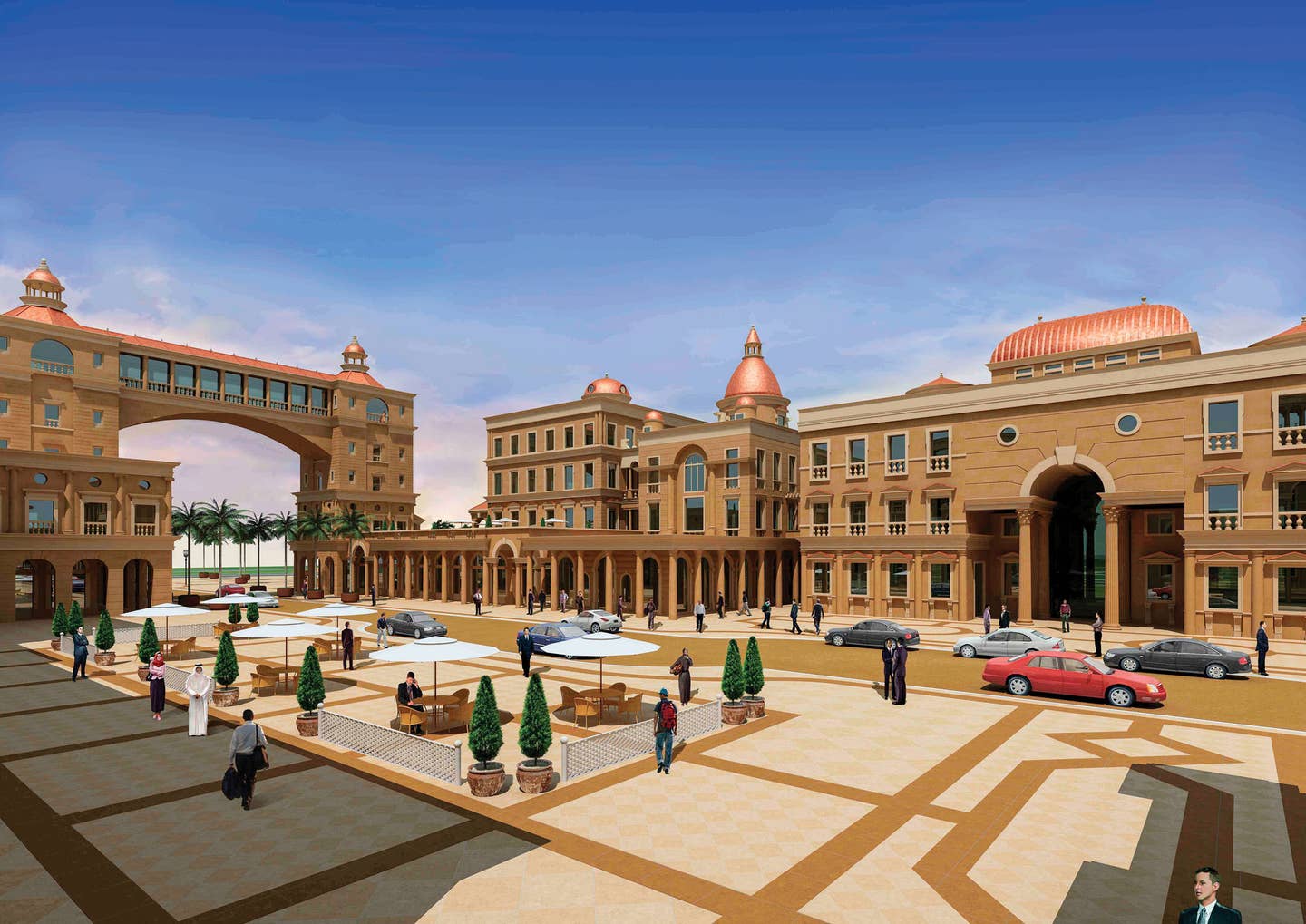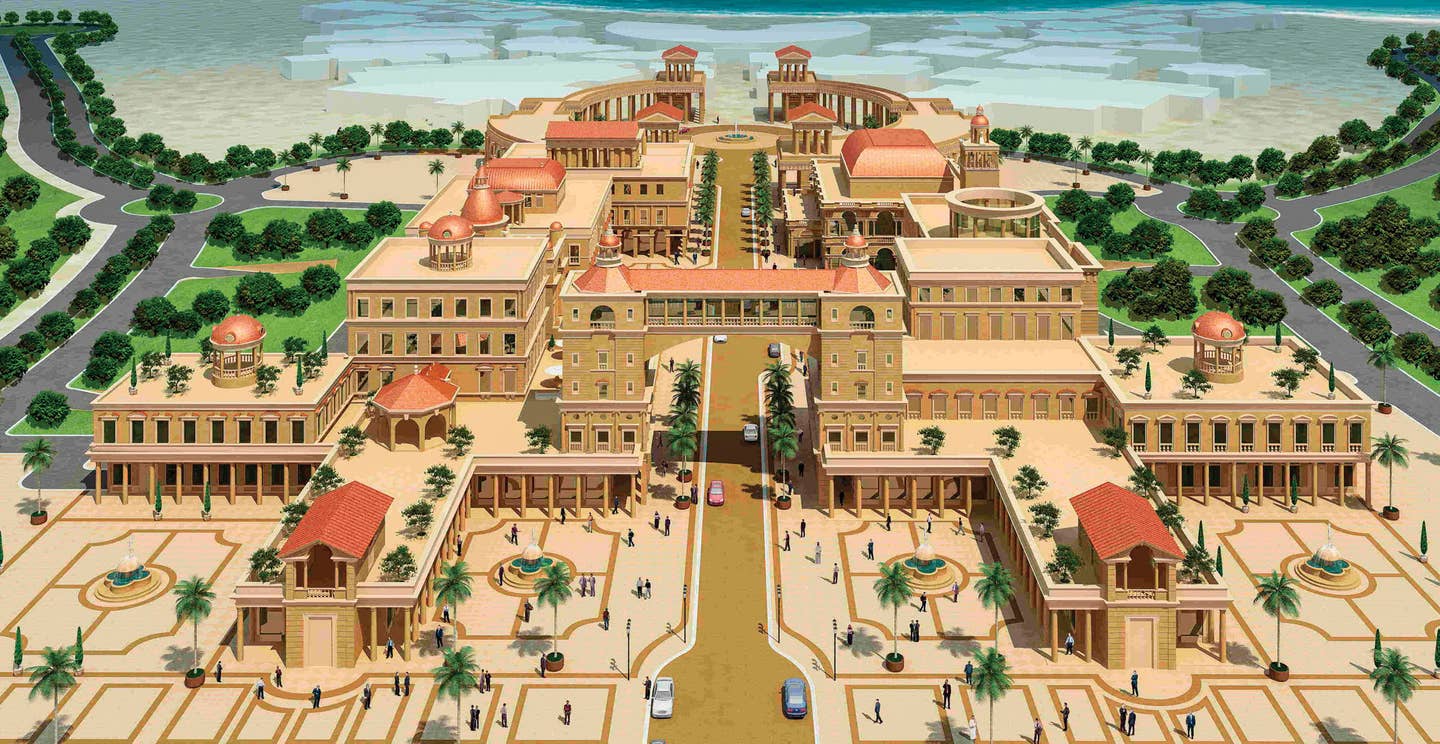
Features
2018 Clem Labine Award: Michael W. Mehaffy and Nikos A. Salingaros
Through the ages, art and science have not always seen eye to eye. Beauty, it is claimed, lies in the eye of the beholder, and artists, conventional wisdom tells us, use intuition to create beautiful objects that elicit an emotional response. Science has little to do with it.
But this year’s Clem Labine winners see a game-changing contribution to architecture from the sciences, giving us a decidedly different picture. Beauty is a largely shared experience that is rooted in the physical structure of things, they say. The sciences offer us a useful lens for understanding that structure and how we can create and improve it with more emotionally powerful and transcendent results.
Nikos A. Salingaros, who is a Texas-based mathematical physicist with an interest in architecture and urban planning, had experienced these transcending emotions first-hand. Traditional-style buildings made him feel happy; steel and glass modernist structures punched him in the gut.
Two decades ago, he set out to find a scientific explanation for the night-and-day difference. What he knew was that over the course of 100,000 years, people had created architecture—and art, music and dance—that had a healing effect that somehow had been snuffed out in the 20th century in the name of progress.
“I applied mathematical rules for the kinds of buildings that give healing feedback,” he says, “and I worked with architect Christopher Alexander, the inventor of pattern language. With my formula, I can judge a building, even a door, as positive, neutral or negative.” His formula validated his own experience: Traditional architecture always gave positive results.
In the intervening time, science caught up with him. “Recent developments, including brain scans, eye tracking and neurological tests,” he says, “prove the validity of my findings (and those of Alexander and others) about architectural structures and their physical effects on the brain.”
While he was thus engaged, Michael W. Mehaffy, an architectural theorist, urban philosopher and university researcher based in Portland, OR, was coming to similar conclusions. “A city is not just a sculpture garden,” he says. “It’s our habitat, and it shapes our lives in countless ways. But there is a disturbing tendency today to treat all of architecture as some kind of giant avant-garde sculptural art form. That’s a profound misplacing of art, which should be the servant of urban life and not its master.”
Their tireless advocacy for the traditional architectural languages in rebuttal to modern orthodoxy led to their being named recipients of the 2018 Clem Labine Award, “a personal achievement award given annually to people who over many years have devoted pro bono time and energy to create a more humane and beautiful built environment.”
The first co-winners of the award, which was established in 2009, Mehaffy and Salingaros were recognized for the work they accomplished together. In announcing the awards, Clem Labine, founder of Traditional Building, Period Homes and Old House Journal magazines, said, “Their work is unique because they are not just peddling opinions and dogma. Rather, they underpin their arguments with the evidence found in mathematics and the social sciences.”
They each started out in the arts. Salingaros, son of the composer Stelios Salingaros and the nephew of the opera singer Spyros Salingaros, was a painter in his youth. The sciences, however, soon seduced him, and he earned bachelor’s, master’s and doctorate degrees in these fields.
Mehaffy, a student of music composition and the arts, earned degrees in liberal arts, philosophy, science, architecture and urban planning that culminated in a doctorate in architecture from Delft University of Technology. They met about two decades ago—neither remembers precisely when or where—while they were working independently with Alexander, the anti-modernist originator of human-centered design. It was Salingaros who edited Alexander’s The Nature of Order and Mehaffy who re-published, with new commentaries, Alexander’s classic paper A City Is Not a Tree.
Once they found common ground, they collaborated on papers, books, lectures and pro-bono design proposals that bucked the high-modernists’ starchitect agenda. In addition, they developed innovative design theories and tools that fuse New Urbanist principles with Alexandrian design methods.
Mehaffy, who lives in a 1911 courtyard apartment in a sustainable, walkable neighborhood in Portland that he deems “almost perfect,” is the director of the Future of Places Research Network and executive director of the urban think tank the Sustasis Foundation. The chair of the College of Chapters of the International Network for Traditional Building, Architecture and Urbanism (INTBAU), which is a United Kingdom charity founded by the Prince of Wales, and a former education director of The Prince’s Foundation in London, he has written or contributed to more than 20 books.
He helped design and develop the award-winning Orenco Station on the Portland, OR, light-rail line. The pedestrian-friendly mixed-use transit-oriented development is built explicitly on the patterns of the city’s older, more traditional neighborhoods. He has also held teaching or research appointments at seven universities in six countries.
“I’ve always tried to bridge the gap between theory and practice in my career,” Mehaffy says. “I like to get in the trenches instead of just building castles in the sky, as happens too often in academia. I also try to work at many different scales, from big regional plans to neighborhoods to houses to gardens and furniture.”
Salingaros applied his own biophilic ideas to set up house in a 30-year-old small, flat suburban brick house that opens onto a riverbed. “I can see nature directly, and I have access to a nature trail in the neighborhood where I walk every day,” he says. “I didn’t have time to change the house before moving in, but I did bring the colors of nature inside.”
A math professor at the University of Texas at San Antonio, Salingaros has made notable contributions to the new disciplines of biophilia, design patterns, architectural complexity, neurogeometric design, the fractal city and the network city. Salingaros is on INTBAU’s committee of honor, and he won a 1997 Alfred P. Sloan Foundation grant to study mathematics and architecture. It was the first time the Sloan foundation recognized research on architectural topics.
In the preface to Salingaros’s 2006 book, A Theory of Architecture, Britain’s Prince Charles praised his work, writing, “Surely no voice is more thought-provoking than that of this intriguing, perhaps historically important new thinker?”
Mehaffy and Salingaros prefer to avoid speaking of architectural “styles” and instead favor the idea of “form languages”—systems of design elements that can be used, like a language, to create coherent places with endless variations. “There is this weird idea that every period of history has only one style ‘of its time,’ which on the evidence is nonsense,” Mehaffy says. “History is more like a fugue of different design elements that come and go, and weave together in different ways in different eras. Except that in the modern period, we’ve seen a claim that only modernism is ‘of our time’—which has been an incredibly destructive idea.”


Salingaros agrees. “Traditional architecture in America has 50 different form languages, and classical is one of them,” he says. “There are 500 other traditional form languages around the world and they all give good feedback to users.” Mehaffy adds, “I like to say that style doesn’t matter—but geometry sure as heck does! It affects our comfort, our well-being, our tendency to walk and linger and interact socially within public spaces. There’s even evidence that it directly affects our health.”
The rise of modernism in the 1920s broke all the rules of the traditional form languages. Mehaffy and Salingaros see its origin as a kind of marketing exercise to glorify the industrialization of the built environment—with fateful consequences. Particularly, it broke the ability to combine “words” in a meaningful manner—it became a non-language.
Mehaffy relates that “in 1908, the architectural theorist Adolf Loos wrote an extremely influential paper called ‘Ornament and Crime’—essentially he argued that because we in the West were now a racially and technologically superior industrial civilization, we had to dispense with ornament. That wrong-headed idea, and the modernist movement that followed it, had profound and tragic consequences for the modern built environment.”
Salingaros notes that “the majority of the buildings in the world are traditional, even now. Only a tiny percentage are in a modernist contemporary style. But you wouldn’t know this because the propaganda machines—the architecture schools and the architectural press—show only glass and steel skyscrapers and other modernist boxes.”
Mehaffy notes that research shows a strong divergence between what most people prefer and what the experts insist on creating: “If you ask most people to look at traditional places, they love them. That’s where we almost all go on our holidays. Ask them to look at modern places, and the reaction is far more mixed, if not downright negative.” Yet new traditional architecture is often weak, if not downright bad—in part because it has gotten so little support from the architectural leadership in the modernist era.
Salingaros says that “it doesn’t always work to copy traditional styles because sometimes architects have incomplete knowledge of a traditional form language and mess it up. You need to speak that particular language fluently.”
New Lessons from the Sciences
Mehaffy and Salingaros see the new findings from the sciences as a game-changer—illustrating the value of traditional architecture for challenges like sustainability, health and well-being.
In their essay in Traditional Building earlier this year, they wrote, “The new research is helping us to better understand how the structure of buildings affects human experience and well-being ... Other disciplines, including anthropology, sociology and environmental psychology, have also recently revealed a great deal about the effects of the environment on human beings, including aesthetic impacts.”
Science, they argue, can and does quantify beauty. “It tells us what works for us and what doesn’t,” Mehaffy says. “It gives us a kind of ‘lens’ on the world, and a guide to our work in transforming it. But you have to be careful about being reductionist. The idea is not to reduce this to a formula. It’s to enrich intuition so we can be better designers and city makers.”
Salingaros notes that “there is no single formula for good design. Rather, we now have a rich science-based toolbox that combines different mechanisms. If you apply all of them, you are pretty well guaranteed to create an environment that is good for the health of the eventual users.”
What makes good traditional architecture work, they say, is that the form language always evolves. Mehaffy says, “It has a rich and complex provenance. It represents the accumulated experience of how to live well in a beautiful, healthy environment. And it’s better adapted to the intricacies of human experiences because it evolved over a long period of time.”
Culture, climate, materials—that’s where design should start, they argue. The modernist buildings—what the architectural authorities claim, without evidence, are in the only legitimate style “of our time”—draw attention and sometimes pleasure from their stark, sculptural shapes, but that doesn’t mean that they foster human well-being.
There is also evidence that the modernist aesthetic of newness doesn’t wear as well as traditional designs, which often grow more beautiful and more valuable as they age. That finding has an important implication for sustainability and resilience, they say.
Recently, Mehaffy and Salingaros have been collaborating on their own design projects. “This is important because it will demonstrate our talking points and writings,” Salingaros says.
Like Mehaffy, he believes in bridging theory and practice. The buildings they are proposing, Salingaros says, “are innovative with a hint of tradition. The give a vague feeling of tradition, and that vague feeling is the healing process acting on your body.”
They say that the impact of their work goes far beyond the elementary arrangement of brick and stone. “We are working to leave something for posterity,” Salingaros says. “We are publishing our work for free so architects and architectural students anywhere in the world can learn how to build buildings within a healing environment.”
Mehaffy sees a larger movement of which he and Salingaros are just two prominent voices. “A lot of people are enlightened by Nikos and others like him. We are not just two people—we are two of many people, including Jane Jacobs, Christopher Alexander, the Prince of Wales and many others in many fields, who are pushing for human-centered solutions. It’s painfully slow, but it’s happening—I see this groundswell happening all over the world.”
Salingaros is more skeptical: “It’s so difficult even to talk about these healing concepts, let alone their mathematical and scientific background. In today’s intellectual desert, where rules for adaptive design have vanished, even the vocabulary for doing so has been forgotten.”
Mehaffy thinks their legacy will be in recognizing what kinds of tools will be needed to effect the transition back to traditional form languages, which he is sure is on the horizon. “The rules, laws, zoning codes and standards of the last 50 years have had horrible consequences because they reward the superficial and fragmented growth of our environment,” he says. “You cannot merely bolt on new technology to an old, failing system.”
Mehaffy and Salingaros admit that getting the establishment to turn away from industrial architecture is an uphill battle. Salingaros says, “Michael and I are fighting this giant profitable machine driven by trillions of dollars. The regime run by the top architecture schools propagates the same old ideas from the early 20th century. And the mainstream media is blindly following the architectural media, which promotes contorted buildings and glass and steel architecture. That promotion is being driven by the global building industry and its business-as-usual approach.”
Mehaffy is more sanguine: “Nikos is focused on storming the gates of architecture, and understandably he gets frustrated because they are closed to him. I’m not as cynical as he is, maybe because I am looking at a bigger audience. I see many people in many other fields converging on the new findings from the sciences and looking at things in a very different light—especially now that people are connecting the dots to human health and sustainability. It’s just that it’s taking time for an isolated architectural establishment to awaken to the new reality. We have to keep pushing.”
Previous Recipients of the Clem Labine Award
Previous Clem Labine Award winners include Alvin Holm, Alvin Holm AIA Architects; Steven W. Semes, Professor and Director of the Graduate Program in Historic Preservation, University of Notre Dame School of Architecture; Ray Gindroz, FAIA, co-founder of Urban Design Associates; Jean Carroon, FAIA, Preservation Principal, Goody Clancy Architects; Milton W. Grenfell, Grenfell Architecture; Robert Baird, Historical Arts & Casting, Inc.; Christine G.H. Franck, Center for Advanced Research in Traditional Architecture (CARTA), University of Colorado Denver College of Architecture & Planning; and Duncan G. Stroik, Duncan G. Stroik Architects.









